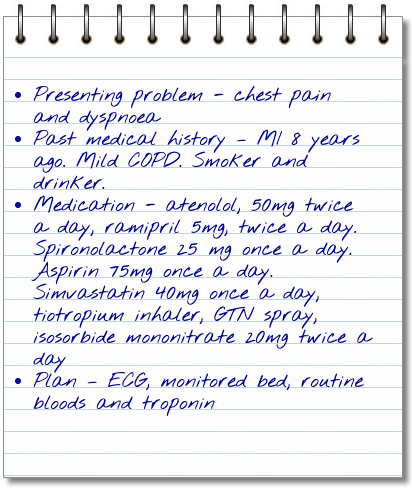Frank is unable to lie flat and is he is struggling for breath: Frank may be unable to lie flat due to fluid building up within his body tissues and then being redistributed to his lungs when he lies down due to fluid body position. This means his lung tissues become “water logged”.

Info on an observation chart
BP is 90/50: Franks blood pressure may be falling because his cardiac output has fallen. In heart failure due to pumping action of the heart being affected, the force of the blood being forced from the ventricle is therefore reduced causing lower systolic blood pressure
Heart rate: 110 BPM: Franks has a tachycardia due to the sympathetic nervous system “flight or fight mechanism” which recognises this fall in blood pressure and responds by releasing adrenalin, constricting the peripheral vessels and increasing the pulse rate. This is one of the maladaptive responses within heart failure we will explore further within the case.
Oxygen saturation: 82%: Franks has low O2 saturations due to his mild COPD and as a consequence of his heart failure.
Respiratory Rate: 22: Franks respiratory rate is raised as his bodys demand requirements for oxygen are increased
- Presenting problem – chest pain and dyspnoea
- Past medical history – MI 8 years ago. Mild COPD. Smoker and drinker.
- Medication – atenolol, 50mg twice a day, ramipril 5mg, twice a day. Spironolactone 25 mg once a day. Aspirin 75mg once a day. Simvastatin 40mg once a day, tiotropium inhaler, GTN spray, isosorbide mononitrate 20mg twice a day
- Plan – ECG, monitored bed, routine bloods and troponin
Pulse point
National Early Warning Systems come in a variety of styles and abbreviations, these are all discussed within Module 4.
Page last reviewed: 28 Jul 2020


